What is your image of a tropical plant? Mine is large leaves and/or brightly colored flowers. Believe it or not, you can bring the tropics to your landscape by using some hardy plants that look tropical.
The first one that comes to mind is Musa basjoo (Japanese Banana) because of its height and enormous leaves. Although somewhat short when first planted, it will continue to increase in height (up to fourteen feet) over the years if you never dig it up. Planted deeply (twelve inches below the soil line) and mulched well for the winter, some have survived several zone 5 winters in Wooster, Ohio and in Muncie, Indiana. Let the leaves die naturally; in the spring, strip the leaves back as far as possible to prevent water from collecting in the trunk. If it collects water, it will rot. Grow in full sun and average water.
Another plant with large but different leaves is a perennial – Rodgersia. There are several species of Rodgersia but all have large leaves and lend a garden a very tropical air. They bloom in June with tall (three feet), vertical spikes that resemble those of Astilbe in shades of white, pink, and red but the main attraction is the foliage. It needs lots of moisture and partial shade. Otherwise, the leaves will crisp. Give Rodgersia lots of room because it slowly creeps outward, at least three to four feet.
Astilboides tabularis (Shield-Leaf) used to be classified as a Rodgersia but is now a genus of its own. Enormous, lobed, round leaves can be used as an umbrella-like shelter if you are caught working outside during a cloudburst. The flowers and culture are very similar to those of Rodgersia.
Huge flowers seem tropical to me and hardy hibiscus certainly have them. There are several cultivars with white, red, or varying shades of pink and the height ranges from dwarf (two and a half feet) to tall (five to six feet). I have many of the shorter ones in my landscape. They foliate very late so don’t think they died just because you don’t see any action until mid to late May. In fact, be sure not to prune the stalks from last year any shorter than six inches; they will act as marker. When they do foliate, the thick stems with large leaves quickly fill the space. In July, these hibiscus start to bloom their heads off and continue to do so until October.
All of these plants are readily available so add a touch of the tropics to your landscape.


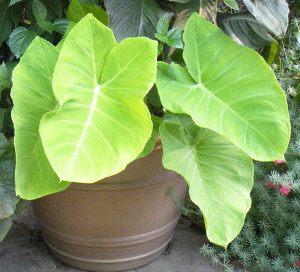
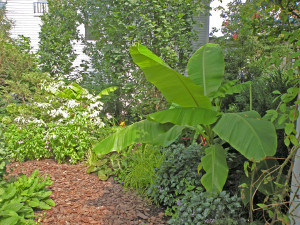
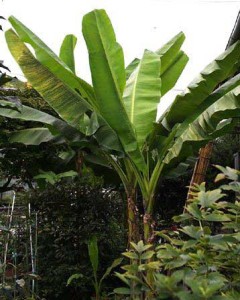
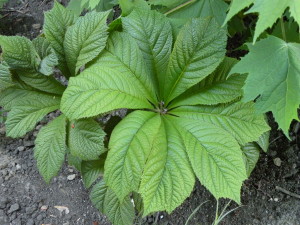

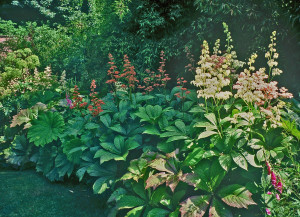
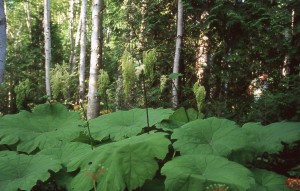
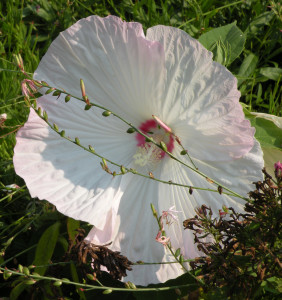


1 Comment